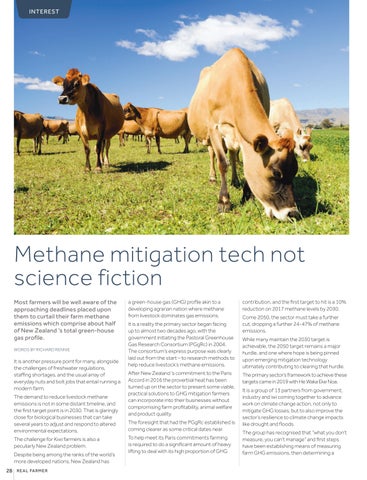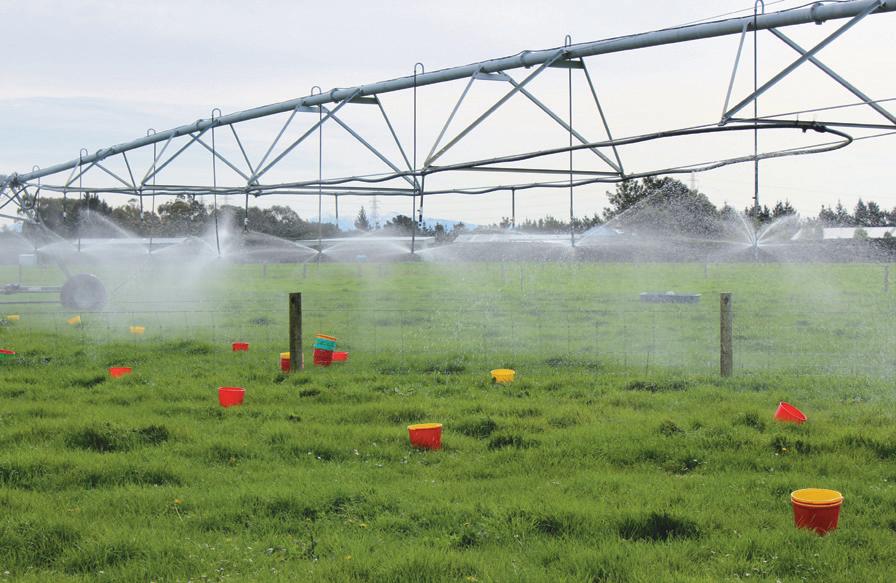INTEREST
Methane mitigation tech not science fiction Most farmers will be well aware of the approaching deadlines placed upon them to curtail their farm methane emissions which comprise about half of New Zealand ’s total green-house gas profile. WORDS BY RICHARD RENNIE
It is another pressure point for many, alongside the challenges of freshwater regulations, staffing shortages, and the usual array of everyday nuts and bolt jobs that entail running a modern farm. The demand to reduce livestock methane emissions is not in some distant timeline, and the first target point is in 2030. That is glaringly close for biological businesses that can take several years to adjust and respond to altered environmental expectations. The challenge for Kiwi farmers is also a peculiarly New Zealand problem. Despite being among the ranks of the world’s more developed nations, New Zealand has
28
R E AL FARM E R
a green-house gas (GHG) profile akin to a developing agrarian nation where methane from livestock dominates gas emissions. It is a reality the primary sector began facing up to almost two decades ago, with the government initiating the Pastoral Greenhouse Gas Research Consortium (PGgRc) in 2004. The consortium’s express purpose was clearly laid out from the start – to research methods to help reduce livestock’s methane emissions. After New Zealand ’s commitment to the Paris Accord in 2016 the proverbial heat has been turned up on the sector to present some viable, practical solutions to GHG mitigation farmers can incorporate into their businesses without compromising farm profitability, animal welfare and product quality. The foresight that had the PGgRc established is coming clearer as some critical dates near. To help meet its Paris commitments farming is required to do a significant amount of heavy lifting to deal with its high proportion of GHG
contribution, and the first target to hit is a 10% reduction on 2017 methane levels by 2030. Come 2050, the sector must take a further cut, dropping a further 24-47% of methane emissions. While many maintain the 2030 target is achievable, the 2050 target remains a major hurdle, and one where hope is being pinned upon emerging mitigation technology ultimately contributing to clearing that hurdle. The primary sector’s framework to achieve these targets came in 2019 with He Waka Eke Noa. It is a group of 13 partners from government, industry and iwi coming together to advance work on climate change action, not only to mitigate GHG losses, but to also improve the sector’s resilience to climate change impacts like drought and floods. The group has recognised that “what you don’t measure, you can’t manage” and first steps have been establishing means of measuring farm GHG emissions, then determining a




















